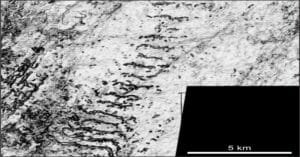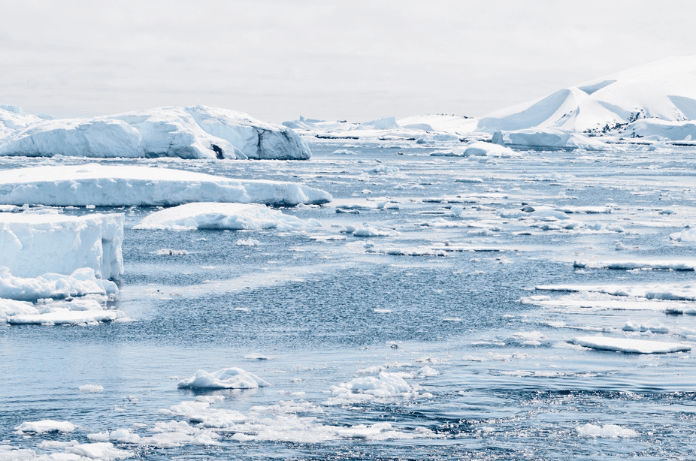In a groundbreaking discovery, researchers have unearthed hidden Ice Age landscapes buried beneath nearly 1 kilometer of sediment in the North Sea. Thanks to 3D seismic technology. Glaciaolists along with international researchers used seismic data to understand the secrets of the ancient landscapes like how ice sheets behaved over 1 million years ago and what that might mean for the future of Greenland and Antarctica. This new research, published in the journal Science Advances, reshapes our understanding of past glacial activity and helps us predict how current ice sheets may respond to climate change.
Let’s dive into how this extraordinary discovery was made, why it matters, and what the future holds.
Using 3D Seismic Technology – Sound Waves to Peer Into the Past
The research team, led by Dr. Dag Ottesen from the Geological Survey of Norway, used advanced 3D seismic imaging to map buried glacial landforms in astonishing detail. Originally developed for assessing host oil, gas, and renewable infrastructures, 3D seismic technology relies on sound waves to reveal structures hidden deep below the seabed.
Here’s how it works:
Clusters of air guns are towed over the sea, emitting sound waves that travel through the sediment. These waves bounce back when they hit structures of varying densities beneath the seafloor. Hydrophones capture these reflections, allowing scientists to construct high-resolution 3D maps of the subsurface.

This method enabled the team to detect features as small as 4 meters and even when buried under 300 meters (984 feet) of sediment. The result? A detailed glimpse into the ancient world of the Ice Age.
Landforms Frozen in Time
The seismic data revealed stunning details of glacial landforms that had remained hidden for millennia. These features, carved by ice sheets about 1 million years ago, include:
- Streamlined landforms sculpted beneath the ice sheet.
- Ridges that document the ice sheet’s retreat.
- Tunnel valleys, which are channels created by meltwater flowing beneath the ice.
Despite their ancient origins, these landforms resemble those produced by much more recent ice sheets. This similarity suggests that the processes governing ice sheet behavior have remained consistent over time.
According to Dr. Christine Batchelor, a Senior Lecturer in Physical Geography at Newcastle University, understanding these ancient landscapes is crucial. “To fully understand the linkages between ice sheets and climate, we need to study how past ice sheets responded to long-term changes in climate,” she explained. “Our results suggest that ice sheets in northwest Europe expanded significantly in response to climate cooling about 1 million years ago.”
A Window Into Past Climate Change
Why does this matter today? Ice sheets are sensitive indicators of climate change. By studying how they responded to historical cooling periods — like the Mid-Pleistocene Transition — we can better predict how modern ice sheets might behave in a warming world.
One of the challenges in glacial research is that many ancient landforms are buried beneath thick layers of sediment. This makes them difficult to identify using traditional methods. The use of 3D seismic data overcomes this barrier, providing a clearer picture of these hidden landscapes and how they evolved.
The study also uncovered elongated furrows in the former seabed, which researchers believe were created by strong ocean currents. These furrows, buried even deeper than the glacial landforms, suggest that the North Sea experienced powerful currents before the ice sheet advanced. This discovery challenges previous interpretations and offers a revised history of glacial activity in the region.
“Our high-resolution data shows that the shape and size of these furrows are consistent with an origin as ocean current furrows,” said Dr. Ottesen. “This rewrites our understanding of North Sea glacial history.”
What We Can Learn From Ancient Ice Sheets
The findings provide new insights into how ice sheets retreat. The researchers observed that for some landforms to remain preserved, the ice sheet must have retreated rapidly by lift-off and floatation of its frontal margin. This discovery sheds light on the mechanisms driving ice sheet collapse a topic of growing concern as modern ice sheets in Greenland and Antarctica continue to melt.
According to Kelly Hogan, a geophysicist at the British Antarctic Survey, “These delicate features tell us about how water moved through the channels beneath the ice and how ice stagnated and melted away. This is extremely relevant as we try to understand how ice will respond to warming conditions today.”
The Future of Glacial Research
While the study provides detailed insights, there is still more work to be done. One limitation is the lack of precise dating for these landforms. To address this, the researchers suggest drilling sediment cores to obtain more accurate timelines for glacial events.
“The next step is to acquire long sediment cores that can allow researchers to better understand the timing of glacial events,” said Dr. Batchelor. By combining seismic data with sediment samples, scientists can refine their models and improve predictions of ice sheet behavior.
Future research should also expand the use of 3D seismic data to other regions, helping us build a more complete picture of Earth’s glacial history.
Why This Matters for Our Future
As modern ice sheets face increasing stress from global warming, the lessons we learn from the past are more critical than ever. By understanding how ancient ice sheets behaved during periods of climate change, we gain valuable insights into the future of our planet’s frozen landscapes.
These findings remind us of the delicate balance that governs ice sheets and the potential consequences of disrupting that balance. The more we know about the past, the better equipped we are to protect the future.
Take Action: Protect Our Planet’s Ice Sheets
Our understanding of ancient ice sheets highlights the urgency of addressing climate change. Protecting our planet’s ice sheets requires immediate action to reduce greenhouse gas emissions and support scientific research. Stay informed, advocate for sustainable policies, and consider supporting organizations working to combat climate change.

